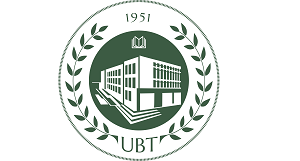ANISA QOSE1*, ARSEN PROKO1
1Department of Forest, Faculty of Forestry Sciences, Agricultural University of Tirana, Albania
*Corresponding author e-mail: anisaqose@gmail.com
Abstract:
Albania is a rich country in aromatic-medicinal plants (AMP), providing a great economic value and contributing to poverty reduction in rural areas. People have believed in plants for thousands of years, for food, shelter, firewood, fibres, clothing, for medical purposes, and for their ornamental values. Today’s use and trade in medicinal and aromatic plants is extensive. It is a constant challenge to ensure that the collection and trade of these species is sustainable managing and equitable sharing. Information about the land conditions and related natural resources is needed at various levels to inform decision-makers. The most important process for the implementation of sustainable management, decision and policy making as well as monitoring and national and international reporting about the state of the natural resources is the inventory of the natural resources, including woody and non woody productions of the natural ecosystems. In Albania the inventory of the aromatic and medicinal is a tenth year legal obligation, but not repeated since 1983 because of the high cost of the traditional methods. The uses of modern Geo-IT tools and remote sensing have become increasingly useful in inventory, sustainable managing and monitoring of AMP. The study area is the territory of Skrapari’s Municipality, located to the South-East Albania. The total study area is c.a. 830.140 ha. Altitudinal point of view is extended from 400 m to 1593 m over the sea level. It is characterized by a mountainous terrain and a wide altitudinal stretch from the typical Mediterranean evergreen sclerophyllous forests and shrubs (Bogove) up to high mountainous vegetation (dwarf and grass species) ever-blistering Mediterranean forests of the xerophytes scrubland to the high mountain pastures (Tomorri Mountain). The methodology carried out in this study is a combination among remote sensing techniques and phytosociological method. Remote sensing technique consisted on the establishment of a coordinative grid (1 x 1 km). In total there are 830 coordinative points for the estimation of land cover/vegetation categories respectively based on LCCS3 (FAO), Forest type categorization (Forest Europe) and dynamic stage for the dynamic series, present on the study area. To do this simultaneously SENTINEL-2 images, ortho-photos and Google map are used. From 830 coordinative points, 156 points are randomly selected for the field surveys and providing accuracy and more detailed information. Remote sensing technique does not give directly information about different individual aromatic and medicinal plants, biodiversity so far. This is done through phytosociological method (Braun Blanquet sensu strictu) using data from 156 releves (field surveys). As the smallest homogenous vegetation unit is considered “plant association”. As the definition of plant association is used this of Rivas Martinez and Jean Marie-Gehu: “the plant association is the elementary element of phytosociology, it is, as well as the species, an abstract concept that encompasses a whole set of “individuals” of the association that share almost the same chorological, statistical, ecological, dynamic and historical characteristics”. A data base in TURBOVEG program with field information is established and statistical data are processed through Juice 7.0 and SYNTAX 2000. Plant associations and AMP are mapped and documented in the data base format. As the result there are identified there are inventoried 647 vascular plants, distributed in 111 families, with a high variability in chorological and biological forms, endemic, sub-endemic and Balkan species as well as the presence of the species under endangerment status (IUCN).
Keywords: AMP, inventory, remote sensing, SENTINEL-2, Ortho-Photos, Phytosociology, TURBOVEG, JUICE 7.0

